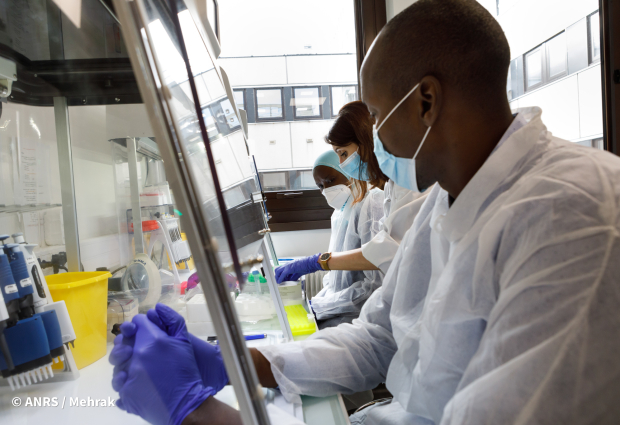
AFROSCREEN
The AFROSCREEN project aims to establish a genomic surveillance network that helps build laboratory capacity for the diagnosis, detection and surveillance of SARS-CoV-2 variants and other emerging pathogens.
Last updated on 23 April 2024
An international and inter-institutional consortium
Implemented as part of the “Health in Common” initiative in 2021, AFROSCREEN is an international, inter-institutional consortium, demonstrating a voluntary, committed approach to collaborations with major scientific and societal implications. The project has received a share of 10 million euros by the Agence Française de Développement (French Development Agency), coordinated by ANRS | MIE, IRD and Institut Pasteur. It has been implemented by an international network of 25 research centres and laboratories across 13 African countries.
Three main objectives
The three main objectives of the project are as follows:
- Detecting variants of SARS-CoV-2 and other emerging pathogens through building laboratory capacity for sequencing and PCR tests (fitting out facilities, supplying equipment and reagents, online or face-to-face training to staff, and support from network experts).
- Epidemiological investigations
– Tracking trends of SARS-CoV-2 infection to provide warning signal, through sentinel surveillance sites that help collect samples for analysis
– Description of the clinical, biological and epidemiological characteristics of confirmed cases of VOI/VOC of SARS-CoV-2
– Study of the factors involved in household transmission of SARS-CoV-2 variants using perspective surveillance over several weeks. - Helping public health decision-making nationally and internationally by sharing sequencing and epidemiological data.
Depending on partners’ skills, the planned actions will ensure the sustainable development of genomic surveillance capabilities in the country. These actions are provided for the identification of emerging pathogens, for surveys carried out as part of the “One Health” approach (in wildlife, domestic fauna, waste water, etc.) and for research projects.
